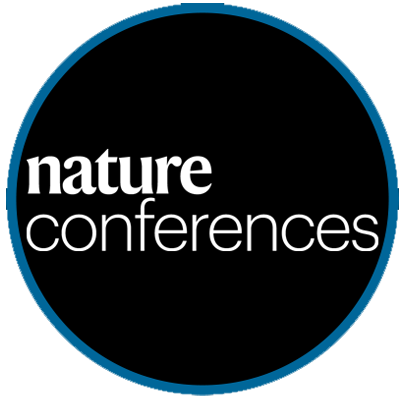
Nature Communications
@NatureComms
Followers
249K
Following
6K
Media
9K
Statuses
30K
Nature Communications is an open access journal publishing high-quality research in all areas of the biological, physical, chemical and Earth sciences.
London, Berlin, New York and Shanghai
Joined October 2010
Our Early Career Researchers (ECR) Co-Review Initiative ensures that #ECR are recognised for their contribution to peer-review and that they can get involved in peer-review alongside more experienced researchers. Learn more: https://t.co/PrQwvmXHOn
https://t.co/oZulqehdv1
22
24
116
Comment by Prof @icouzin that explores how collective intelligence emerges from local interactions in animal groups, and how these principles inform the design of swarm robotic systems. @NatureComms @NaturePortfolio
https://t.co/iIgxpbuYM1
nature.com
Nature Communications - This commentary explores how collective intelligence arises from local interactions in animal groups and how these principles inform the design of swarm robotic systems,...
0
3
6
Save the date! We are hosting the webinar "Inflammatory cell death and anti-tumor immunity". Join us and our speakers Dmitri Krysko, Judy Lieberman, @deadoc80, Pascal Meier 📅 Tuesday 14th Oct 2025 ⏰ 16.00 PM (GMT+1) Register here:
cassyni.com
Different types of regulated cell death, including ferroptosis, necroptosis, and pyroptosis, can elicit an immune response. In this webin...
4
3
18
🧬 Don’t miss the 2nd Meeting on Epigenetics & Epigenomics in Health & Disease! Our editor Dr P. Mallini will be there. 📅Sept 24–26, 2025 | 📍Brussels 🔗 https://t.co/z0HJWPWFWm
#Epigenetics2025 #Epigenomics
1
4
21
I will be attending the 2nd European Fluid Dynamics Conference in Dublin from August 26 to August 29, 2025. Feel free to reach out if you will be attending as well. #Fluids #Softmatter #physics @NatureComms
2
2
12
New collection alert! NeuroAI and Embodied Intelligence We welcome submissions that explore neurobiologically-inspired models, architectures, and learning algorithms that have the potential to enhance embodied AI and robotic systems. https://t.co/5vhXaMbXFB
nature.com
This cross-journal Collection brings together research at the intersection of neuroscience, artificial intelligence, neuromorphic hardware, and robotics with ...
3
15
57
We're bringing together experts to @Uni_Stuttgart to discuss recent challenges & advancements in perovskite-based solar cells. Grab your early bird🎟️by Apr. 30! https://t.co/2wepsPIzK4
@NatureMaterials @NatureComms @NatureEnergyJnl @naturesustainab @NatRevMater @NatRevElectrEng
2
17
41
Best practices for in-situ and operando techniques within electrocatalytic systems
nature.com
Nature Communications - In situ and operando techniques are useful towards mechanistic investigations of electrocatalytic systems but must be carried out and interpreted properly. Here, the authors...
0
5
33
Our editor Laura Sanchez Burgos will be from tomorrow at the @EACRnews congress on Persister Cells: from Bacteria to Cancer! Please go say hi if you want to learn more about our journal or our open collection on Drug-tolerant persister cells in cancer
nature.com
With this cross-journal collection, Nature Communications, Communications Biology, and Scientific Reports welcomes submissions aiming to elucidate the ...
1
7
33
We are looking for a new editor in Battery and electrochemistry. Hiring location: Milan, Madrid, New York, Philadelphia, Shanghai. Deadline 30 March:
0
2
12
We're thrilled to announce our event in Germany hosting global leaders in the field of perovskite-based solar cells. In partnership w/ U of Stuttgart @NatureComms @NatureEnergyJnl @NatureMaterials @naturesustainab @NatRevMater & @NatRevElectrEng >> https://t.co/2wepsPJ7zC
1
10
25
Our editor Laura Sanchez Burgos will be attending the @EACRnews congress on Persister Cells: from Bacteria to Cancer in Lyon next month! Please go say hi if you want to learn more about our journal or about our open collection on DTPs in cancer
nature.com
With this cross-journal collection, Nature Communications, Communications Biology, and Scientific Reports welcomes submissions aiming to elucidate the ...
0
3
18
Our cross-journal collection on Drug-tolerant persister cells in cancer is now open! We welcome submissions aiming to elucidate the molecular mechanisms, potential therapeutic targets and biomarkers of drug-tolerant persister cells for cancer. @CommsBio
nature.com
With this cross-journal collection, Nature Communications, Communications Biology, and Scientific Reports welcomes submissions aiming to elucidate the ...
0
13
37
Check out our full paper in Nature Communications! 📜🔗 https://t.co/dsasFHyVKe Excited to discuss—DMs open for collaborations! 🔬💡 #CancerResearch #Metastasis #ECM #DigitalPathology #SpatialBiology #NatureComms
nature.com
Nature Communications - Interactions with the extracellular matrix (ECM) control tumor proliferation, invasion and metastasis. Here, authors provide spatial information on ECM organization and how...
4
5
30
Looking at regional warming and marine bivalves, brachiopods, and gastropods in the early Jurassic, Reddin et al. find that species with cooler temperature preferences than local conditions were more likely to become extirpated or extinct. https://t.co/PPpQ4eRI88
nature.com
Nature Communications - Thermal bias may predict the impact of climate change. Looking at regional warming and marine bivalves, brachiopods, and gastropods in the early Jurassic, the authors find...
0
4
16
The evolutionary reasons for the variation in silicon concentrations across plant families remains unclear. Pang et al. provide evidence that silicon variation is closely linked to global & long-term climate change https://t.co/a1jmxXKZOH
nature.com
Nature Communications - The evolutionary reasons for the variation in silicon concentrations across plant families remain unclear. This paper provides new evidence that silicon variation is closely...
0
5
15
Shrub encroachment into grasslands affects species biodiversity & ecosystem functioning. Dang et al. find that shrubs reduce pathogen load in colder regions but may increase it in warmer regions. @liuxiangsh
https://t.co/JuLyybR1Ku
nature.com
Nature Communications - Shrub encroachment into grasslands affects species biodiversity and ecosystem functioning, but its impact on herbaceous diseases and the role of climatic factors remain...
3
6
18
Plant taxonomic richness & average range-size commonly exhibit a negative relationship. Liu et al. reveal that in northeast Siberia & Alaska, this relationship shifted from positive to negative at the glacial to Holocene transition. @YingLiu1234567
https://t.co/PyyrrvPPhH
nature.com
Nature Communications - Plant taxonomic richness and average range-size commonly exhibit a negative relationship, though the mechanisms are still debated. Liu et al. reveal that in northeast...
0
0
10
Epigenetic variation can impact evolutionary processes. In this Perspective, Mueller et al. discuss the potential for epigenetic mechanisms to be integrated into population genetic practice. https://t.co/v84JczTAzm
nature.com
Nature Communications - Epigenetic variation can impact evolutionary processes to varying extents depending on its transgenerational stability and degree of environmental influence. This...
1
2
14
Sustainable phosphorus management is crucial for crop production and environmental protection. Gong et al. show that the Dynamic Optimization of Soil Phosphorus approach can reduce fertilizer use by 47.4% without impacting yields. https://t.co/bJhXGbbWgx
nature.com
Nature Communications - Sustainable phosphorus management is crucial for crop production and environmental protection, yet smallholder farmers face challenges in adopting efficient practices. The...
0
2
11
This study explores how climate change and pop growth shape flood exposure. By 2100, exposure could rise from 1.6 to 1.9 billion people, driven 21% by climate change and 77% by pop growth, with low-income and urban regions most affected. @JupiterIntel
1
3
11















